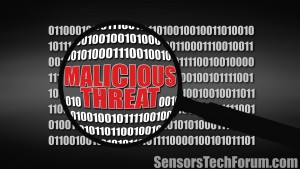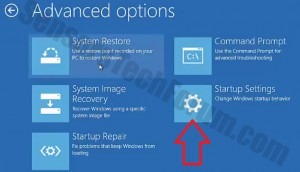| Name | Rane.exe |
| Type | Trojan horse |
| Short Description | Once dropped onto the system, the Trojan will modify registry elements and attempt to accomplish a network connection. |
| Symptoms | Unpermitted system alterations. |
| Distribution Method | Via spam emails, corrupted links, drive-by downloads, etc. |
| Detection tool | Download SpyHunter, to See If Your System Has Been Affected By Rane.exe |
In some cases, malware is reported to take over certain .exe files to spread onto computers. In other instances, .exe files sneak into the system and turn out to be Trojan horses or other types of malicious software. If you have noticed rane.exe running in the background, you should be aware that your PC may have been exposed to malware. Rane.exe has been identified by several anti-virus programs under various names.
McAfee has detected it as Generic Dropper.agu, Symantec – as WS.Reputation.1, and Kaspersky – Trojan-Dropper.Win32.Agent.jmft. The detection rate for rane.exe is quite high, even though some programs haven’t succeeded in detecting it (e.g. Avira). According to the detection results, rane.exe belongs to a Trojan horse and should be removed entirely.
Rane.exe Distribution Path and Threat Description
Trojan horses can sneak into the system via spam emails, corrupted links, and websites (drive-by downloads), or downloading infected files. Some Trojans act as backdoors, connecting to a remote host to execute a number of malicious operations. Once the Trojan is inside the system, it may change files and registry keys.
According to McAfee’s report, Generic Dropper.agu:
- Tries to write to a memory location of a previously loaded process.
- Takes account of various system files and directories.
- Adds or modifies Internet Explorer cookies.
- Tries to write to a memory location of a process of unknown origin.
Here is a list of the files that have been added to the affected system:
- %TEMP%\Trojan.exe
- %TEMP%\Trojan.exe.tmp
- %USERPROFILE%\Start Menu\Programs\Startup\5cd8f17f4086744065eb0992a09e05a2.exe
The Trojan also creates new system elements:
→HKEY_CURRENT_USER\SOFTWARE\5CD8F17F4086744065EB0992A09E05A2\
and changes others:
→HKEY_CURRENT_USER\ENVIRONMENT\SEE_MASK_NOZONECHECKS = 49
→HKEY_CURRENT_USER\SOFTWARE\MICROSOFT\WINDOWS\CURRENTVERSION\RUN\5CD8F17F4086744065EB0992A09E05A2 = “%TEMP%\Trojan.exe”
→HKEY_LOCAL_MACHINE\SOFTWARE\MICROSOFT\WINDOWS\CURRENTVERSION\RUN\5CD8F17F4086744065EB0992A09E05A2 = “%TEMP%\Trojan.exe”
Generic Dropper.agu is also reported to attempt connecting to the following network connection:
→92.241.32.**:1177
If the connection is successful, other malware pieces may be dropped onto the system.
Rane.exe Removal Options
You can refer to the step-by-step tutorial given below the article to remove the Trojan. First you need to run your PC in Safe Mode. After following the instructions, scanning the system via professional anti-malware software is still highly advisory. To stay guarded against malware, remember to update frequently your anti-virus program.

Spy Hunter scanner will only detect the threat. If you want the threat to be automatically removed, you need to purchase the full version of the anti-malware tool.Find Out More About SpyHunter Anti-Malware Tool / How to Uninstall SpyHunter
Preparation before removing Rane.exe.
Before starting the actual removal process, we recommend that you do the following preparation steps.
- Make sure you have these instructions always open and in front of your eyes.
- Do a backup of all of your files, even if they could be damaged. You should back up your data with a cloud backup solution and insure your files against any type of loss, even from the most severe threats.
- Be patient as this could take a while.
- Scan for Malware
- Fix Registries
- Remove Virus Files
Step 1: Scan for Rane.exe with SpyHunter Anti-Malware Tool



Step 2: Clean any registries, created by Rane.exe on your computer.
The usually targeted registries of Windows machines are the following:
- HKEY_LOCAL_MACHINE\Software\Microsoft\Windows\CurrentVersion\Run
- HKEY_CURRENT_USER\Software\Microsoft\Windows\CurrentVersion\Run
- HKEY_LOCAL_MACHINE\Software\Microsoft\Windows\CurrentVersion\RunOnce
- HKEY_CURRENT_USER\Software\Microsoft\Windows\CurrentVersion\RunOnce
You can access them by opening the Windows registry editor and deleting any values, created by Rane.exe there. This can happen by following the steps underneath:


 Tip: To find a virus-created value, you can right-click on it and click "Modify" to see which file it is set to run. If this is the virus file location, remove the value.
Tip: To find a virus-created value, you can right-click on it and click "Modify" to see which file it is set to run. If this is the virus file location, remove the value.Step 3: Find virus files created by Rane.exe on your PC.
1.For Windows 8, 8.1 and 10.
For Newer Windows Operating Systems
1: On your keyboard press + R and write explorer.exe in the Run text box and then click on the Ok button.

2: Click on your PC from the quick access bar. This is usually an icon with a monitor and its name is either “My Computer”, “My PC” or “This PC” or whatever you have named it.

3: Navigate to the search box in the top-right of your PC's screen and type “fileextension:” and after which type the file extension. If you are looking for malicious executables, an example may be "fileextension:exe". After doing that, leave a space and type the file name you believe the malware has created. Here is how it may appear if your file has been found:

N.B. We recommend to wait for the green loading bar in the navigation box to fill up in case the PC is looking for the file and hasn't found it yet.
2.For Windows XP, Vista, and 7.
For Older Windows Operating Systems
In older Windows OS's the conventional approach should be the effective one:
1: Click on the Start Menu icon (usually on your bottom-left) and then choose the Search preference.

2: After the search window appears, choose More Advanced Options from the search assistant box. Another way is by clicking on All Files and Folders.

3: After that type the name of the file you are looking for and click on the Search button. This might take some time after which results will appear. If you have found the malicious file, you may copy or open its location by right-clicking on it.
Now you should be able to discover any file on Windows as long as it is on your hard drive and is not concealed via special software.
Rane.exe FAQ
What Does Rane.exe Trojan Do?
The Rane.exe Trojan is a malicious computer program designed to disrupt, damage, or gain unauthorized access to a computer system. It can be used to steal sensitive data, gain control over a system, or launch other malicious activities.
Can Trojans Steal Passwords?
Yes, Trojans, like Rane.exe, can steal passwords. These malicious programs are designed to gain access to a user's computer, spy on victims and steal sensitive information such as banking details and passwords.
Can Rane.exe Trojan Hide Itself?
Yes, it can. A Trojan can use various techniques to mask itself, including rootkits, encryption, and obfuscation, to hide from security scanners and evade detection.
Can a Trojan be Removed by Factory Reset?
Yes, a Trojan can be removed by factory resetting your device. This is because it will restore the device to its original state, eliminating any malicious software that may have been installed. Bear in mind that there are more sophisticated Trojans that leave backdoors and reinfect even after a factory reset.
Can Rane.exe Trojan Infect WiFi?
Yes, it is possible for a Trojan to infect WiFi networks. When a user connects to the infected network, the Trojan can spread to other connected devices and can access sensitive information on the network.
Can Trojans Be Deleted?
Yes, Trojans can be deleted. This is typically done by running a powerful anti-virus or anti-malware program that is designed to detect and remove malicious files. In some cases, manual deletion of the Trojan may also be necessary.
Can Trojans Steal Files?
Yes, Trojans can steal files if they are installed on a computer. This is done by allowing the malware author or user to gain access to the computer and then steal the files stored on it.
Which Anti-Malware Can Remove Trojans?
Anti-malware programs such as SpyHunter are capable of scanning for and removing Trojans from your computer. It is important to keep your anti-malware up to date and regularly scan your system for any malicious software.
Can Trojans Infect USB?
Yes, Trojans can infect USB devices. USB Trojans typically spread through malicious files downloaded from the internet or shared via email, allowing the hacker to gain access to a user's confidential data.
About the Rane.exe Research
The content we publish on SensorsTechForum.com, this Rane.exe how-to removal guide included, is the outcome of extensive research, hard work and our team’s devotion to help you remove the specific trojan problem.
How did we conduct the research on Rane.exe?
Please note that our research is based on an independent investigation. We are in contact with independent security researchers, thanks to which we receive daily updates on the latest malware definitions, including the various types of trojans (backdoor, downloader, infostealer, ransom, etc.)
Furthermore, the research behind the Rane.exe threat is backed with VirusTotal.
To better understand the threat posed by trojans, please refer to the following articles which provide knowledgeable details.







